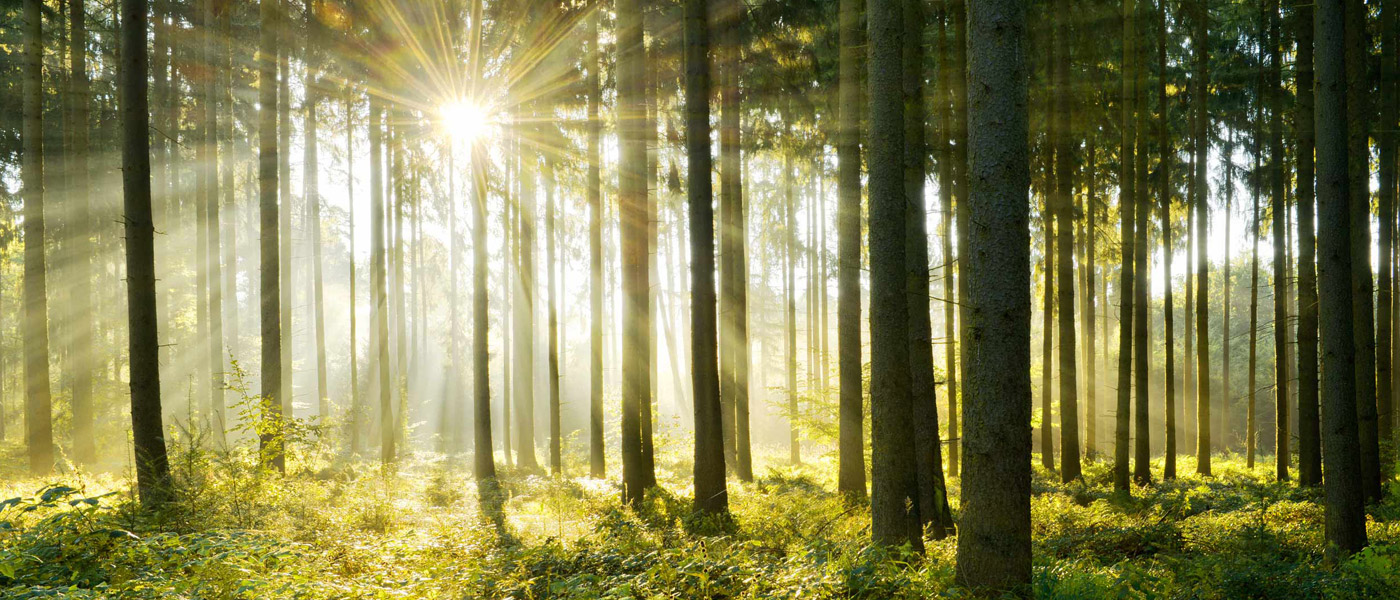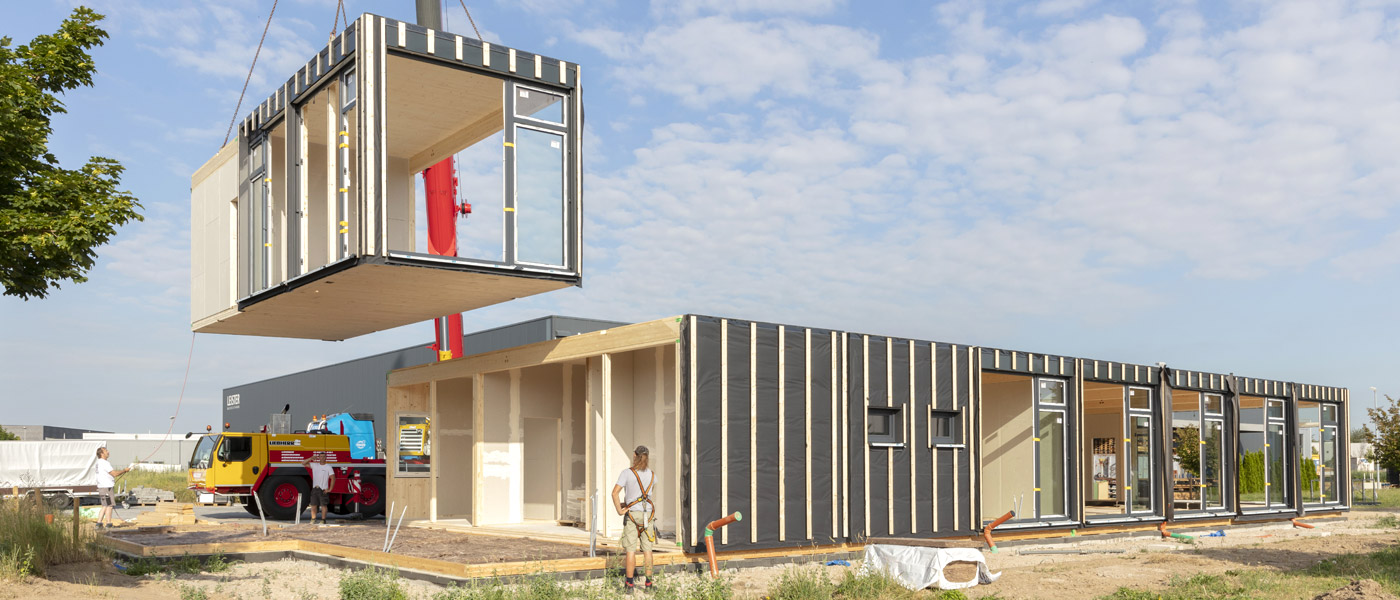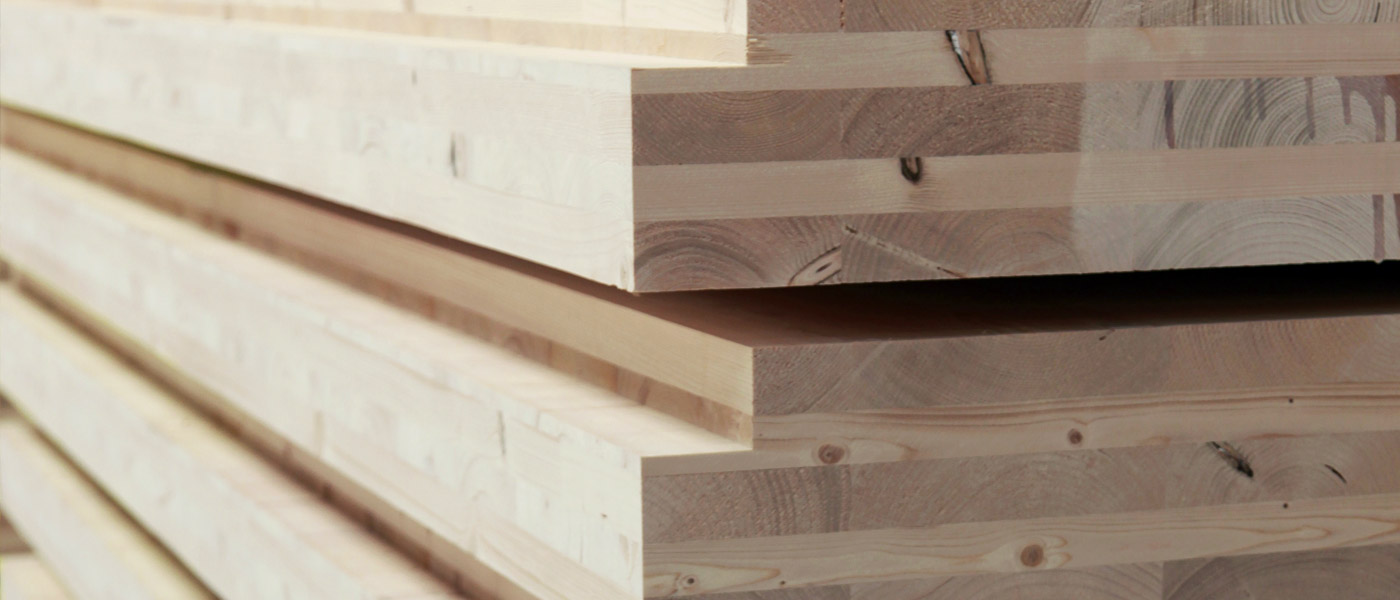FAQ
on planning and building with wood
Here you will find answers to frequently asked questions on a wide range of topics relating to timber engineering.

Sustainability
& Ecology
Is it true that wood as a building material rots and is not durable?
From a biological point of view, wood is a very resistant and durable building material. Dry structural timber is hardly attacked by wood-destroying fungi and insects when used properly in buildings. Therefore, it is by no means necessary – as was often assumed in the past – to treat the wood with chemical preservatives to protect it from damage by fungi and insects. The various measures of constructive wood preservation without chemical treatments and using primarily native woods are summarised in the recently revised standard DIN 68 800. We see the best examples of the durability of wood all over the world. Many of the oldest buildings on earth are made of wood and still stand today as they did many centuries ago.
Are forests cleared for the production of wooden components?
The DERIX-Group is PEFC-certified and only uses wood from sustainable forestry. This means that for every tree used, a new one is planted. In this way, we ensure that we preserve the wood cycle and that the material will continue to be available without restriction in the future. Sustainability and responsibility for future generations is also a major concern for us, and one that takes up a lot of space in our company.
Where is all the wood for building going to come from?
Ironically, hardly anyone asks where all the concrete will come from in the coming decades. Because we wouldn’t know what the world would look like then, with all the water, gravel, sand and limestone mined or consumed for concrete. Wood is the only load-bearing building material that grows back indefinitely. The German forests alone have a lot of potential, so that the timber construction quota can still increase significantly. Sustainable forestry, which has been practised since 1713, has enabled us to use wood virtually indefinitely for over 300 years.
Is wood actually hazardous waste after the demolition of a building or does it have to be incinerated?
Solid wood elements are ideally suited for later reuse as load-bearing components. With CNC equipment, components can also be made into new shapes for new buildings. The individual element does not have to be disassembled into its individual parts, but can be reused in a large format. For this reason, we at DERIX-Group have also introduced a general take-back obligation for our glulam and X-LAM elements. There are also further benefits in the cascade for the parts that do not get another life as a load-bearing component later on: Our partner companies build entire pieces of furniture or stair treads from X-LAM remnants. The CO2 is thus bound for many decades or even centuries, until at the end of the cascade the wood can be thermally recycled.
What is the lifespan of wooden structures?
If they are kept dry, their lifespan is unlimited. The Kapellbrücke in Lucerne, for example, which has a roof, is over 500 years old. There are also still very well preserved half-timbered houses from the Middle Ages or even older pagodas in Asia or even stave churches in Norway that are several hundred years old. Without catastrophes and wars like the Thirty Years’ War and all that followed, there would be many more old buildings made of wood today. It is striking that the wooden buildings that still exist were also built in good quality in earlier times.

Economic efficiency
Is it true that building with wood is expensive?
If one compares the initial investment costs of a timber building with those of conventional new buildings, they are in fact usually not significantly cheaper. However, if one considers the entire life cycle of the building in the economic assessment, including the effects on resources and the climate as well as on the health of the people living and working in the building, the priceless advantages become clear: building with wood enables short construction times and creates space gains through slim constructions. The natural building material is healthy, ecological, renewable, climate-friendly and can even be used in a circular manner, as it is recyclable and thus ensures a residual value for the building after its use. We are committed to taking back all our building components at the end of their useful life..
Do I have to calculate more maintenance and upkeep for the wooden elements in the company?
No – if, for example, the tenant drives a nail into the wooden wall or contaminates the wall, this is relatively easy to repair. Holes are filled with wood putty, impurities or surface damage can be sanded. Special UV-protective coatings can prevent discolouration when exposed to sunlight. In the case of conversions or breakthroughs, as in conventional construction, the statics must first be checked and, if necessary, supported by bracing. In general, however, the processing of solid wood is very simple compared to reinforced concrete.

Technical
questions
Why should I build with wood, even though wood burns?
Wood has a kind of natural fire protection and components made of wood behave well in case of fire: a layer of charcoal forms on the components, which conducts heat poorly and protects the core of the cross-section. On average, a burn-off of 0.7 mm/min can be expected. In 30 minutes, the cross-section decreases by about 20 mm on all sides, in 60 minutes by 40 mm. The remaining cross-section carries the loads. All fire resistance classes can be achieved.
Am I allowed to build several storeys with wood at all? What restrictions are there?
Indeed, we have to deal with many different laws and building regulations worldwide (and also throughout Germany). In the meantime, however, these political framework conditions largely harmonise in the possibilities of using wood in multi-storey buildings, including high-rise buildings. There is a recognisable political will to introduce a sustainable and climate-positive product as early as the shell construction stage. Feel free to contact us about the currently valid framework conditions in your federal state or country – our regionally and nationally active engineers and partners will be happy to advise you.
What is actually timber hybrid construction?
If one understands “hybrid” to mean the use of different materials within a construction, then in principle every building is already a type of “hybrid building”. Currently, the term “timber hybrid building” is often used for construction methods in which timber and concrete play a role in the supporting structure of multi-storey buildings. Wood and steel is already a proven combination that is actually already used as standard in most constructions. In the case of an interplay between wood and concrete, one can speak of a “hybrid building” where both materials are basically used separately – e.g. a staircase made of concrete and attached to it the entire supporting structure made of solid wood. Or one can consider the hybrid building as a composite of wood and concrete – for example in the “wood-concrete composite ceiling”.
In a wooden building I can hear my neighbour all the time, can't I?
Of course, the same sound insulation requirements according to DIN apply to timber buildings as to conventional buildings. This applies to both impact sound and airborne sound. Solid wood is first of all a lightweight building material that requires additional measures to meet the sound insulation requirements. Therefore, there is a whole range of possible solutions for wall and ceiling systems in solid wood construction. As a rule, the requirements are achieved by decoupling measures or also by additional mineral building materials.
What must be taken into account in hall construction for wide-span structures?
Anyone who plans and builds a roof structure for long-span buildings must know the properties of the building materials, the building physics and the static relationships in detail. This also includes taking into account all loads acting on the construction, such as snow and wind.
What are the advantages and disadvantages of the different building materials in hall construction?
Wooden constructions have a low dead weight and high strength at the same time. That is why they are predestined for large spans. They have smooth surfaces on which dirt does not settle and are resistant to attack by airborne substances – they withstand the salty air in brine baths, for example. Although combustible, they have a high fire resistance, which means they are load-bearing long after the fire has started. Steel constructions have high strengths with relatively small dimensions. A disadvantage is the low fire resistance duration; in addition, dust can settle in the open cross-sections, which in environments with salty air or humidity makes it necessary to increase the maintenance of the components in order to prevent corrosion. Reinforced concrete structures combine the properties of steel and concrete. Concrete, which takes on the compressive forces, is resistant to most attacks. To take over the tensile forces, however, you need additional steel, which corrodes easily, among other things. A major disadvantage of long-span constructions made of this building material is their high weight: reinforced concrete weighs about five times as much as wood. The dead weight already consumes a large part of the load-bearing reserves. Reinforced concrete looks clumsy and is uneconomical for wide-span constructions. For this reason, prestressed concrete is used for larger spans of about 25 m and more. Here, the steel inserts are prestressed and transfer compressive forces into the concrete.
Are there different neuralgic points for the load-bearing capacity depending on the building material?
Components made of any building material are subjected to the same stresses when used in the same way. The safety of all building materials is comparable. However, because every building material has its strengths and weaknesses, planners must not only master the static rules. You also have to take into account the specific properties of the building materials and use them correctly.
What climatic factors endanger the load-bearing capacity and how can this be prevented?
Basically, water endangers every construction, completely independent of the building material. Wooden components that are permanently damp lose their strength and are at risk from fungal attack. Steel components rust, and in concrete components the reinforcing steel is also at risk from corrosion. Structural protection must be planned against water, the enemy of every construction. Buildings should be constructed in such a way that moisture penetration is impossible. In addition, structures must be maintained and the operators or owners must ensure that roofs and walls remain watertight. The same applies in principle to frost, because water is also involved here. If water enters a crack, regardless of the building material, and freezes, the water expands, turns to ice and blows off the concrete or tears apart the wood. Heat is harmless to any building material in the normal range. The situation is different in case of fire. Here, timber construction has its special strengths. Steel structures or reinforced concrete structures suddenly lose their strength at temperatures beyond 300 to 400 degrees and collapse. Wood does burn, but the outer, charring layer acts like a thermal insulation and protects the core, which continues to bear weight.
Are the types of wood used in hall construction in this country all equally suitable?
There are some differences that need to be taken into account. For wide-span halls, glulam is often used or also trusses made of solid wood, for example with node connections made of nail plates. Coniferous wood is usually used for this. The standard coniferous wood in Europe is spruce. It is not very resistant to moisture and thus to fungus. Buildings made of spruce wood require special “constructive wood protection”. This means: they must be built in such a way that the components do not get wet. Then spruce wood is durable indefinitely. Impregnation with a wood preservative has little effect on spruce because the liquid hardly penetrates the surface. Other types of wood such as larch and pine have somewhat fewer problems with durability. Oak, which is usually only used as solid wood, is hardly considered as a mass building material for economic reasons and is currently not approved for use in glulam.
How do tree-sized boards become very many larger, straight or curved pieces of wood?
The boards are joined with finger joints to form slats of any length. They are very flexible and can be bent into shapes after the glue has been applied. Once the glue has hardened, the components have strength. This has been done since about the middle of the 19th century. In Southampton, there is still a college with curved wooden components from 1869. In Germany, the Weimar master carpenter Otto Hetzer took up this construction method and developed it further to industrialised series production. A gymnasium built by him still stands in Wuppertal. It was not until the reconstruction after the Second World War, however, that glulam experienced its breakthrough. Half of the glulam produced worldwide comes from North America, the other half from Europe, predominantly from the German-speaking countries.
What methods are there for joining individual boards together?
The boards are joined together by finger-jointing. Boards glued together underneath each other make up the finished components. One then often speaks of “trusses”. This means “girders”.
What types of glue are used?
Today we are actually talking about adhesives. Glues are a subspecies, namely adhesives that contain water as a solvent. In the past, only glues were used. Otto Hetzer used casein glues, which were made from bones. Today, polycondensation glues are used, which consist of glue and a hardener. The two are mixed together and the water escapes when the glue hardens. For gluing our wood products, we use polyurethane adhesives (PUR) and the melamine resin gluing system GripPro-Plus, both of which meet excellent emission values (e.g. the Material Health Platinum Standard for PU-glued X-LAM boards).
How is the suitability of the adhesives tested and since when have these tests existed?
Adhesives must have approval in Germany. The Materialprüfungsanstalt MPA (Materials Testing Institute) in Stuttgart tests the adhesives, after which the Deutsches Institut für Bautechnik (German Institute for Building Technology) issues the general building authority approval. This has been the norm for decades.